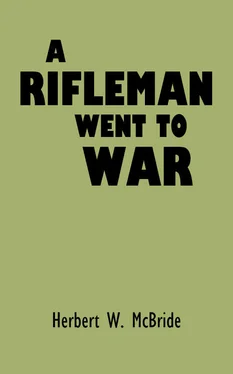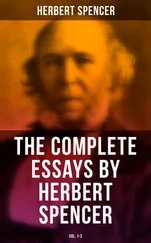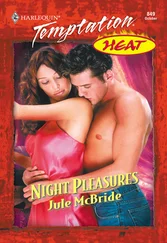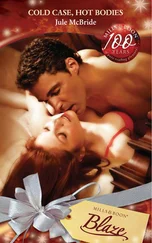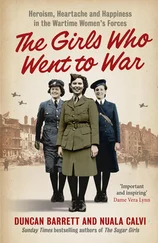Well, there you have it. Any youngster brought up in such an atmosphere is bound to develop into a rifleman. As the years rolled ’round I graduated through the different grades. My father was Captain of a company of the old Indiana Legion, as it was known before the adoption of the designation of National Guard, and I was one of the privileged boys who ’tended target for them on the range which they had improvised at the edge of town. In those days the Militia companies were self-supporting. Even after I became a full fledged “soldier” we not only bought our own uniforms, but paid armory rent and all expenses.
On some occasions, we boys were actually allowed to shoot, the older men taking our places in the pits. How those old Springfields did kick. They were wicked. I have seen many of the old timers with black-and-blue shoulders after a day’s shooting and, curiously enough, I remember that most of the officers had their shoulder straps bent. That was before the idea entered anyone’s head to lie at the now commonly accepted “forty-five degree” angle. They lay straight toward the target and took the whole kick right on the top of the shoulder when firing from the prone position. The back positions, which were commonly used then, were not at all bad. Either the Texas Grip or the Stevens were easy, even for us kids, but when it came to the “belly-whooping” position, well, we did it, but every shot would set us back a foot or more.
At the age of fifteen I enlisted in and for several years remained a member of the Third Regiment. During that time, my father rose to the rank of Colonel commanding, and I became a sergeant. Then I went to work in Chicago and immediately affiliated with the First Illinois Infantry — Company I — Captain Chenoweth commanding. During the summer of 1893, having been informed by a wise medico that I had T.B., I put in my time ranging around in Colorado and New Mexico, part of the time as a cow-puncher and the rest working for a coal-mining company. (That is, I was supposed to be working for them, but, as a matter of fact, I was using them simply as a meal ticket, as I spent every minute of my idle time in scouting around looking for something to shoot at.) I met and got acquainted with a lot of the real old timers: men famous during the hectic days of Abilene, Dodge and Hays City and, of course, those who had been mixed up in the various ructions incident to the clearing up of the famous Maxwell Land Grant, upon part of which this mine was located.
Trinidad, near the mine (Sopris), was one of the hot spots in the old days and many a bad man had met his “come-uppance” there and along the Picketwire or, as the original Spanish name has it, the Purgutoire River. From these men and from my practical shooting with them in various matches, I learned just about how good they and their erstwhile friends — and enemies — could really shoot, both with the pistol and the rifle. Bat Masterson, Jim Lee, Schwin Box and Nat Chapin, just to name the best of them, were all good shots, but the best of them never could hold a candle to the amazing performances of a lot of hitherto unknown “experts” who are continually bobbing up in the moving pictures and the sensational stories published in supposedly reputable magazines in the year of grace, 1930.
I should have included Brown — Three-finger Brown — in the above list. He was as good as the best of them although he had to do all his shooting left-handed: due to the fact that he had allowed his curiosity to over-ride his good sense in the matter of investigating the doings of a band of “Penitentes” one might and, as a result, lost the thumb and first finger of his right hand.
All these men had grown up in the West and had lived through the various “wars” and ructions which flared up every now and then, all the way from Texas to the Black Hills. They all bore the scars of combat but the very fact that they had survived was, to my notion, the best evidence that they were good. Those were the days of the survival of the fittest, especially in the case of men who, like all those mentioned, had occupied positions as legal guardians of the peace, all along the border.
From these men I learned many things, the most important of which was the point which they all insisted was absolutely vital: the ability to control one’s own nerves and passions — in other words, never to get excited.
I had the opportunity to see a couple of them in action during some disturbances which came up during the Fourth of July celebration and never will forget that, while armed, they never even made a motion toward a gun: they simply walked up to the belligerent and half drunken “bad men” and disarmed them and then walked them off to the calabozo to cool off. Yes, I learned a lot from those men. That they could shoot, both quickly and accurately, is unquestioned, but the thing that had enabled them to live to a ripe middle age was not so much due to that accomplishment as to the fact that they were abundantly supplied with that commodity commonly called “guts.” That was the point, above all others, that impressed me and remained with me after I had returned to the East; and, ever since, I have tried to live up to the standard of those pioneers of the shooting game.
By the time I got back, my father had been appointed to the bench of the Supreme Court and the family had removed to Indianapolis. I took up my home there and immediately joined up with Company D, of the Second Infantry — the famous old “Indianapolis Light Infantry” which, in the military tournaments from late in the Seventies, had stood at the very head of all the crack drill teams of the country. But, they could not only put on a prize-winning close order drill: they had, as officers, men who knew the value of shooting ability and, although the State and Federal authorities never appropriated a cent for the purpose, they managed to carry on target practice. Every member paid dues for the privilege of belonging to the Guard or, as it was then known, to the Indiana Legion. We bought our own uniforms and paid our own armory rent and we bought the necessary components for the ammunition which we expended on the range and which we loaded ourselves. Then we rented a part of some farmer’s pasture for a range and built our own targets. The company officers were all rifle enthusiasts; but one, above all others, kept the game moving in those early days — Major (then Lieutenant) David I. McCormick, the “Grand Old Man” of military rifle shooting in Indiana.
After a hitch in the infantry, in which I attained the rank of Sergeant, I signed up with the artillery — Battery A, First Indiana — known all over the country as “The Indianapolis Light Artillery.” You see, Indianapolis had both infantry and artillery organizations that ranked with the very best. Both of them had carried off the highest honors in many of the military tournaments which were held annually in those days. (I wonder if any of those old outfits still retain their original names — the Richmond Blues, the Washington Fencibles, the Chickasaw Guards?)
This Battery A was the 27th Indiana Battery in the Spanish-American War and the nucleus of the 150th Artillery (Rainbow Division) during the World War, and its then commander, Robert L. Tyndall, was the Colonel of that Regiment. (He’s now a Major-General — but that’s all right: he is just Bob Tyndall to his old tilicums.)
My work took me to Cincinnati and I joined Battery B of the First Ohio Artillery — Captain Hermann’s Battery. Too bad they have discontinued the practice of naming the battery after its commanding officer — (and I’ll bet that young lieutenant who was in Reilly’s Battery in China will agree with me — even though he is now a Major-General and Chief of Staff).
Now, this Battery B was peculiar in one respect — possibly unique: it was a Gatling-gun battery. With the Indianapolis outfit, I had learned about the Rodman muzzle-loading guns and, while with the 1st Illinois, had frequently seen Lieutenant Jack Clinnin playing around with a bunch of kids and some Gatling-guns, but I had never taken these contraptions very seriously. Now, however, that was all we had to do. Of course we had pistols and sabres and all such, but our real game was to learn how to use those Gatlings to the best advantage. Captain Hermann was a very practical officer and saw to it that we had all the actual outdoor shooting that the law — and the state of the exchequer — would stand. I remember that I won a can of oysters at one of those shoots and I declare that no medal or other thing I have since won by shooting ever gave me the thrill that that did. It was probably about tenth place — we had turkeys, hams and a lot of other things for prizes — donated by patriotically inclined German-American citizens from “over the Rhine” (in Cincinnati), and I think that was what first put the machine-gun bug into my head.
Читать дальше
